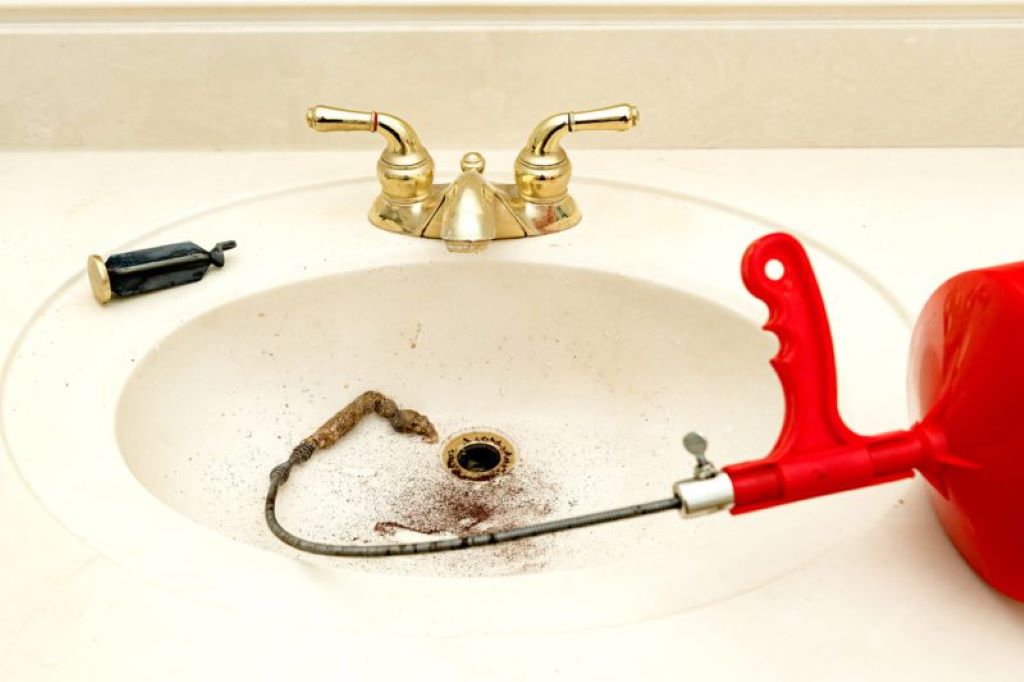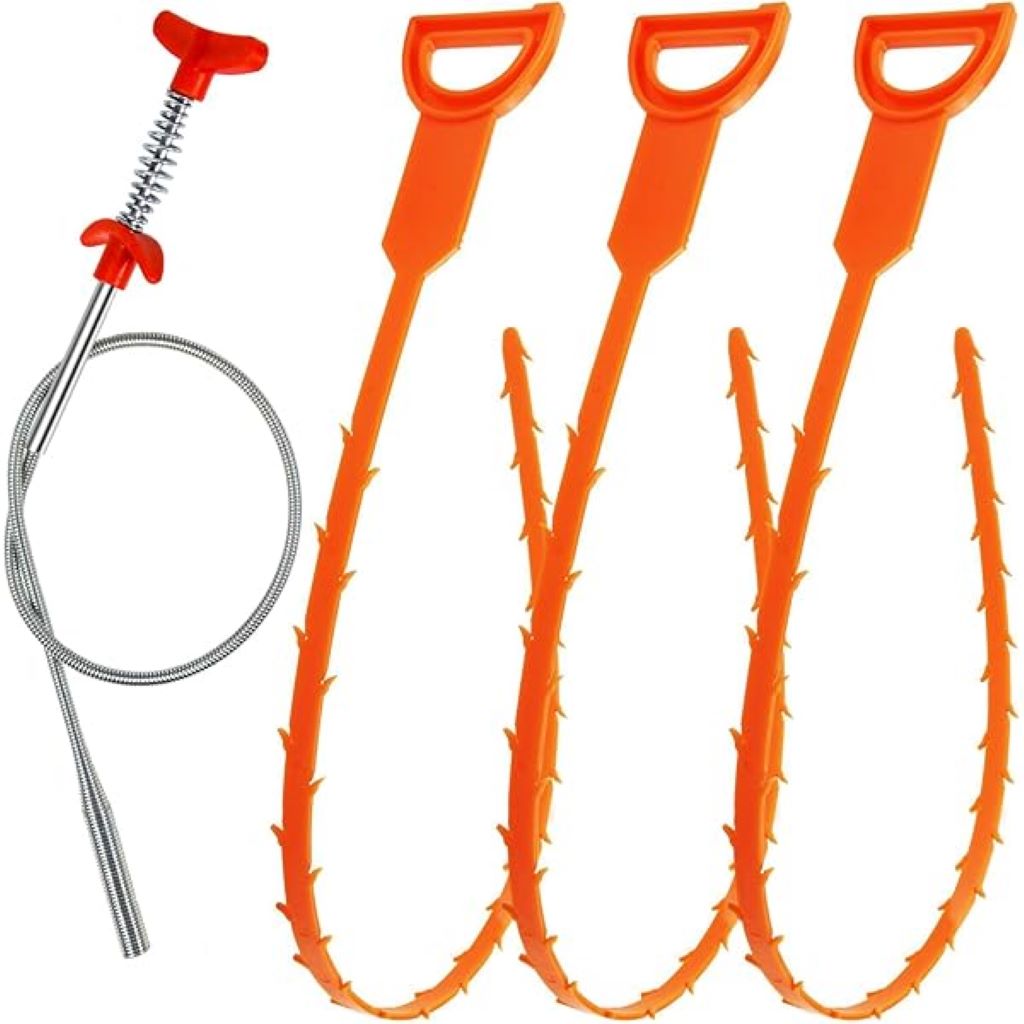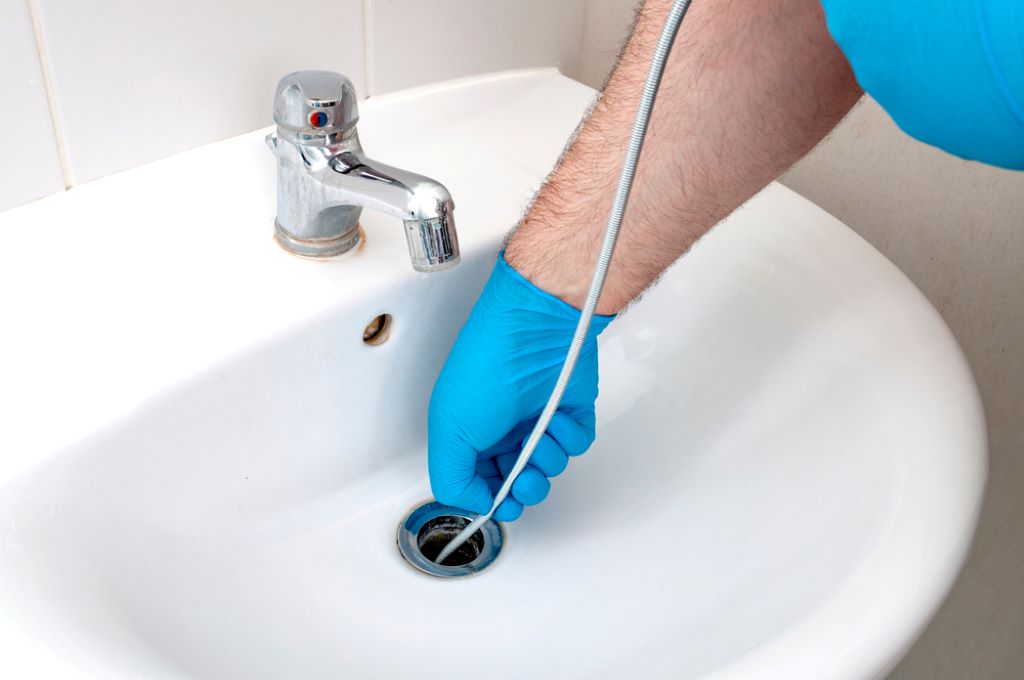Dealing with a clogged drain is no fun. One minute you’re standing at the sink doing dishes, and the next, you’ve got a slow-draining backup threatening to overflow onto the floor! If you’re looking for a solution, one effective method is to learn how to snake a drain. We’ve all been there. But before you reach for the liquid drain cleaners (or call an expensive plumber!), try snaking the pipe yourself. Snaking a drain is an easy, affordable way to remove built-up gunk, hair, and debris that’s blocking the flow. With a few simple tools and these step-by-step instructions, you can often unclog drains and get things flowing freely again.
So grab your supplies and let me walk you through the process of DIY drain snaking – no plunger required! By the end, you’ll be able to tackle clogged sinks, tubs, and showers like a pro.

Gather Your Drain Snaking Supplies
Snaking a drain doesn’t require fancy equipment. Most of the supplies either already live under your kitchen sink or can be purchased affordably at any hardware store. Here’s what you’ll need:
Drain Snake/Auger
This flexible metal cable is the superhero of your drain snaking efforts. When inserted down the drain, it can hook onto and dislodge gunk, hair, and other debris to clear the clog. While you can sometimes find smaller drain snakes designed for sink clogs, I always use a larger 25-foot auger which provides more torque and cleaning power.
Gloves
Protect those hands! Drain clogs often involve nasty grease, gunk, and who knows what else. Waterproof rubber gloves will keep you clean.
Bucket
Place a bucket under pipes before snaking to catch any drained water or dislodged debris. And it’s helpful for emptying out sinks or tubs first too.
Plumber’s Putty
Once inserted, seals up space around the snake cable for a tighter fit in the drain. This maximizes cleaning power.
Flashlight
To peek down the drain if needed, or to have extra visibility under cabinets or pipes where you’re working.
Safety Goggles
Another layer of protection as gunk comes dislodged. You’ll be glad you wore them!
And that’s it! 5 simple items that you can grab for just a few bucks. With the supplies ready to go, let’s get to the good stuff…
How to Snake a Drain Step-By-Step
Snaking a typical sink, tub, or shower drain follows a pretty straightforward series of steps:
Step 1: Prepare the Space
Clear a big workspace around the clogged drain. Move aside anything under the sink or around pipes first. You’ll need a lot of elbow room for the snake’s cables and twisting action.
Have your bucket positioned underneath to catch water. For tubs or sinks, plug the overflow opening with a wet rag – this forces rising drain water through the clog for better cleaning.
Put on those rubber gloves and safety goggles too! Things could get messy…
Step 2: Sanitize & Empty Out
Removing any standing water around the clog first allows the snake better access. For tub drains, bail water using cups and the bucket.
With sinks, plug the second basin and bail water, then unplug to let it fully drain. Run some hot water too to sanitize and flush pipes beforehand.
Step 3: Inspect & Prepare Drain
Peer down into the drain opening and strainer. If you spot any hair or debris sitting on top, remove it first with needle nose pliers.
Then add a thin rope of plumber’s putty around the drain opening to seal around the snake cable later for a tighter fit. Smoosh it to fully cover the edge.
Step 4: Slowly Insert the Snake
Now the fun part…carefully insert the straight end of the snake cable down the drain, keeping it centered as you go. Go slowly to avoid scratching pipes. Listen for a “clinking” sound, which means you’ve likely reached the elbow joint curve where clogs often develop.
Step 5: Twist Through the Clog
Here comes the muscle! Once around the curve, begin firmly pushing and twisting the snake at the same time. Doing both helps propel the snake tip through the clogged area with more force.
Keep steadily working for a few minutes. Need extra torque? Try securing pipes with one hand while you twist with the other.
Step 6: Repeat Until Clear
As gunk dislodges, you should start feeling less resistance or even see dirty water draining. Keep repeating steps 4 and 5 until fully clear and water drains freely.
Go deeper where needed by slowly feeding out more cable, then retract once clear. If the clog persists, try approaching from a different starting position.
Step 7: Flush Out Debris
Once unclogged, run very hot water down the drain for a minute to help flush away dislodged gunk inside pipes.
Then carefully remove the snake and clean off the end. Use an old toothbrush if needed to remove clingy hair or debris.
Step 8: Prevent Future Clogs
Yay, flowing drain! But let’s not repeat this anytime soon. To help prevent future clogs:
- Install hair catchers in tub/sink drains
- Pour boiling water weekly to dissolve oils
- Limit grease down the kitchen sink
- Use a biweekly enzyme cleaner to eat away residue
And there you have it – from backup to free-flowing in just 20 minutes! With the right technique and a little practice, snaking drains is a useful skill that anyone can pick up. You’ll save buckets of time, money, and frustration next time pipes back up.

Troubleshooting Tricky Drain Clogs
Most basic tub or sink clogs easily clear with these simple snaking steps. But you may occasionally encounter some more stubborn backups.
Here are some tips for tackling pesky clog situations:
Multiple Clogs
If one area starts draining mid-snake then suddenly clogs again, you likely have an additional blockage further down the pipes. Keep pushing past the first cleared clog until water flows freely without restarting.
Moves Around Pipe Bends
Some slimy clogs can narrowly avoid the snake by slipping just past it along pipe curves and joints. If this happens, try retracting then working from different angles. Aim the snake tip along each side until something hooks.
You can also try using a small hook or hook attachment to better grab the clog. Gently tug debris toward you once hooked.
Small Drain Openings
In tiny spaces like bathroom sink drains, a large snake may barely penetrate at all. Switch to a smaller hand-powered sink auger to more effectively clear up to 6 feet down. Use it in the same twisting, pushing method.
Old Rust & Sediment
Years of rust flakes or loose sediment can fully block older pipes. For this, I recommend an enzyme cleaner treatment once fully cleared to fully dissolve and prevent resettling. Consider having a plumber routinely inspect really old pipes.
Multiple Stories or Main Line
If you can’t seem to find the clog down multiple feet, suspect it lies deeper in main pipes that snake cables can’t always reach well from your drain access point. Call a professional plumber who can inspect the main building line.
Know Your Limits
While many home clogs take just a few tries to clear, don’t risk damaging pipes or overdoing it solo if problems persist. There’s no harm in calling for backup! Know what you can DIY and when it’s smartest to pick up the phone.
FAQs
Let’s wrap up with answers to some frequently asked questions about snaking drains:
How do I know a drain is fully unclogged?
A completely clear drain should have water draining freely at full speed the entire time, without slowing down. Pour a few buckets of water to double check flow. And remember, it may initially drain quickly then suddenly clog again partway down if more blockages remain further in the pipe.
Can I snake my toilet?
You can attempt to lightly snake a toilet drain starting gently through the bowl opening. But most true toilet clogs sit deep in waste pipes beyond an auger snake’s reach. Unless you remove the actual toilet, it’s best to leave toilets to the pros.
Will snaking scratch my pipes?
It’s extremely unlikely. Cable snakes are designed to flex and bend smoothly around joint curves and variety of pipe materials from PVC to cast iron. As long as you work slowly and carefully, snakes shouldn’t harm pipes.
Can I use boiling water instead?
Pouring boiling water down the drain seems logical, but rarely breaks up a stubborn clog on its own. Commercial drain cleaners also help minimally. A physical snake works best to actively hook and drag out debris that water can’t penetrate or dissolve.
Will snaking pipes work for a blocked kitchen sink?
Yes! A 25-foot auger can effectively clear kitchen sink drains in the same twisting, pushing method outlined here. Kitchen sink clogs also often result from built-up food debris and grease along the piping route. Simply insert down the non-disposal side and work the cable until fully open.
In Summary
And there you have my complete guide on how to snake a drain in your home all by yourself – no plumber needed!
We covered the necessary supplies, step-by-step instructions, troubleshooting tips for tricky clogs, FAQs, and everything. Just remember to start slow, repeatedly push/twist the snake cable, and thoroughly flush pipes after clearing.
With the right technique and a little practice, snaking drains is an easy DIY skill for tackling all sorts of stubborn clogged pipes and backups, ensuring your bathroom sink drain stays clear. Say goodbye to standing water and hello to free-flowing drains! Never let another backed-up sink or tub get you down again, as mastering this simple yet effective method keeps your plumbing running smoothly.

